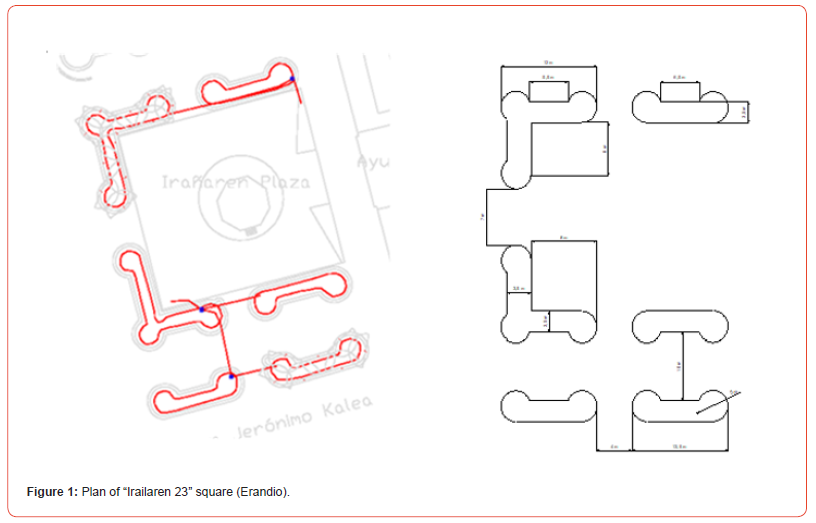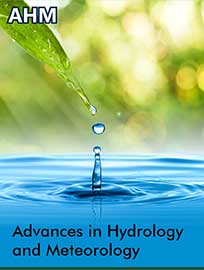 Mini Review
Mini Review
Reuse of Water for Sustainable Irrigation of the “Irailaren 23” square in Erandio, Spain
Natalia Alegría1*, Igor Peñalva1,Charles Pinto2 and María Urrestizala1
1Energy Engineering Department, Bilbao School of Engineering, University of the Basque Country, Spain
2Department of Mechanical Engineering, Bilbao School of Engineering, University of the Basque Country, Spain
Natalia Alegría, Energy Engineering Department, Faculty of Engineering, University of the Basque Country, Spain.
Received Date:October 03, 2023; Published Date:October 25, 2023
Introduction
The European Water Charter, proclaimed by the Council of Europe in Strasbourg on May 6, 1968, was a statement of principles for proper water management in which it was stated that “freshwater resources are not inexhaustible” [1]. To speak of Responsible Consumption is to address the problem of hyper-consumerism in developed societies and powerful groups in any society, which continue to grow as if capacities were infinite. To this end, at the Johannesburg summit in 2002 [2], the following was pointed out: “15% of the population living in high-income countries are responsible for 56% of the world’s total consumption, while the poorest 40% in low-income countries are responsible for only 11% of consumption”. On the other hand, the Royal Society’s report of 2000 [3] noted that current consumption trends are unsustainable, that there is a real need to reduce consumption and that “to preserve human well-being in the long term, people need to move towards new ways of meeting human needs, adopting patterns of consumption and production that maintain the Earth’s life-support systems”. It is therefore necessary to apply the three R’s rule: Reduce, Reuse and Recycle.
Today’s society demands more and more water for its well-being,
including city gardens, which have come to play an important
role in the water inventory of the different municipalities. It is in
this context that the gardens of the “Irailaren 23” square in Erandio
(Bizkaia, Basque Country, Spain), a municipality located 5 km from
the northern coast of the Iberian Peninsula, have been studied. The
possibility of irrigating them with the grey water generated in the
town council, which is located in the same square, and with rainwater
has been evaluated. For these reasons, the following points have
been studied in this work:
The precipitation waters.
The grey water generated in the town hall on a daily basis.
The irrigation system is currently installed.
The plant species planted in the gardens and their needs.
Precipitation Water
Erandio is located in the Atlantic or Oceanic climate zone, which is characterized by mild winters and not very hot summers with constant rainfall, whose accumulated annual rainfall is around 1100 mm [4]. The monthly average rainfall is close to 100 mm, which means between 3 mm and 4 mm per day, although it does not really rain every day.
Grey Water
As the square is located next to the town hall, the water from the toilets could be accumulated as grey water for watering the gardens. Taking into account that it employs an average of 50 people who go to the toilet at least twice during working hours, and that cisterns use an average of 6 L and washing hands can be considered as a waste of 0.5 L, it is estimated that around 650 L of grey water can be produced per day, i.e. 0.65 m3. It would simply be necessary to place a container in which the grey water could be deposited on the ground floor of the town hall after filtering the water and chlorinating it to the amount necessary to meet the minimum requirements for irrigation.
Irrigation System

Figure 1 shows the irrigation system installed in the square, marked with a red line and in grey in the upper left flowerbed and in the lower right flowerbed (Figure 1).
It is an automatic irrigation system, consisting of the following
inventory:
2 foundry manholes to house the cut-off valve of the service
connection, including the connection to the general distribution
network.
3-station receivers for wireless signal connection between
the programmer and the electrovalves.
3 rectangular plastic catch basins of 67 cm x 50 cm x 31
cm for housing valves or irrigation accessories.
400 m of “bd pe-32” pipe to be installed in the irrigation
network (6 atm pressure and 32 mm diameter).
52 “1800” model 10 cm diffusers or equivalent, which irrigate
180º, and which are 3 m apart from each other.
Plant Species
The plant species in this garden can be differentiated according
to the following classification:
Vivacious plants, which are herbaceous, non-woody
plants. When the cold of winter arrives, their stems and leaves dry
up, but their roots remain alive underground so that they sprout
again in spring.
Perennial plants, which do not wither or lose their leaves
at any time of the year.
Seasonal plants.
Shrubby species, which are less than 100 cm high.
Water requirements are different throughout the year [5]. But considering their water needs and taking into account the potential evapotranspiration, the irrigation frequencies of the different species have been determined and the volume of extra water needed for irrigation throughout the year has been calculated (Table 1).
Table 1:Frequency and volume of water used for irrigation.

The total amount of water in one year is 360 m3. As it has been estimated that 0.65 m3 would be generated daily in the town hall and the town hall works 5 days, 3.25 m3 would be accumulated in a week.
In order to treat greywater, a purification treatment would be
necessary, which would consist of:
A physical process, with filters that prevent the passage
of solid particles.
A chemical process by chlorinating the water so that it can
be reused.
For a public administration building such as the one studied, one or more 10 m3 tanks could be provided. With a small suction pump, the water would be sucked out of the container and taken to the irrigation system, which could be equipped with a double inlet valve that would allow to select whether the water to be used for irrigation is grey water or not. With a small suction pump, the water would be sucked out of the container and delivered to the irrigation system, which could be equipped with a double inlet valve to select whether the water to be used for irrigation is grey water or, if there is not enough grey water stored (e.g., after holidays), it would be taken from the water supply network. The cost of the pump –container system, for example in Ansareo [6] is approximately 2500 €. The Bilbao Bizkaia Water Consortium CABB [7], which is the entity that manages the water supply network in the town, has a tariff of approximately 2 €/m3, so economically the work would not be justified, as it is more an environmental awareness action, in order not to increase the inventory of network water for irrigation.
The water price is lower than 1000 €/year (considering the flow meter) and at has to be necessary 3 year for the amortization of the pump-container system. In addition to the possible use of grey water, with the installation of humidity sensors, irrigation could be regulated automatically, as in seasons of abundant rainfall, irrigation would be suspended automatically (at present, irrigation is suspended manually by the garden managers according to their own criteria).
Conclusion
The work can be concluded by indicating that the grey water generated in Erandio Town Hall, located in the same square where the gardens studied in this study are, could be used to water the different species at any time of the year and that the initial investment does not represent an exorbitant cost, raising public awareness of the use of grey water in public buildings.
Acknowledgement
The authors would like to thank the Water Hall “CABB” (The Bilbao Bizkaia Water Consortium (CABB, in Spanish), a Business Hall located at the Bilbao School of Engineering, where data to make this revision related to energetic generation along the water supply system of Greater Bilbao were available.
Conflict of Interest
No conflict of interest.
References
- European Water Charte'r - https: //rm. coe. Int
- (2002) The World Summit on Sustainable Development in Johannesburg.
- The Scientific Century securing our future prosperity.
- Website of the Basque Government's meteorological information service: EUSKALMET
- Conservation and maintenance in Gardening 1 Didactic Unit 5 Chapter 5.1. Didactic unit 5 by Professor Gustavo Marina Moreno
- Ansareo Pumping Facilities. https://ansareo.com/
- Bilbao Bizkaia Water Consortium.
-
Natalia Alegría*, Igor Peñalva,Charles Pinto and María Urrestizala. Reuse of Water for Sustainable Irrigation of the “Irailaren 23” square in Erandio, Spain. Adv in Hydro & Meteorol. 1(4): 2022. AHM.MS.ID.000516.
-
Freshwater Resources, Consumption, Rainwater, Irrigation System, Grey Water
-

This work is licensed under a Creative Commons Attribution-NonCommercial 4.0 International License.






